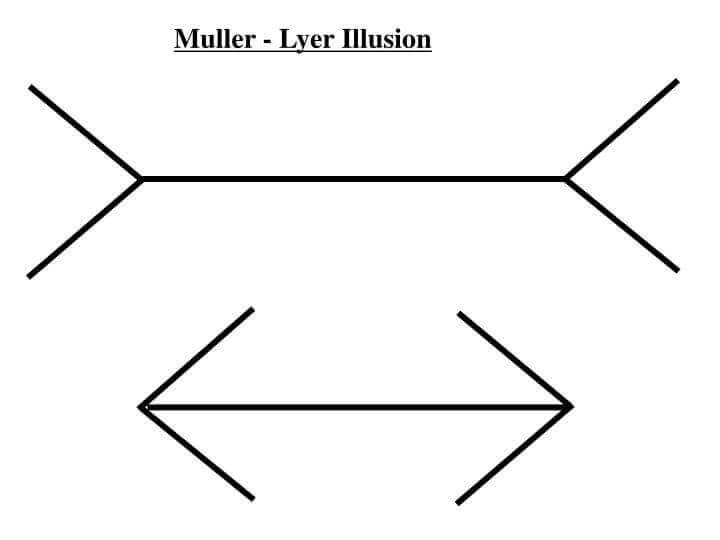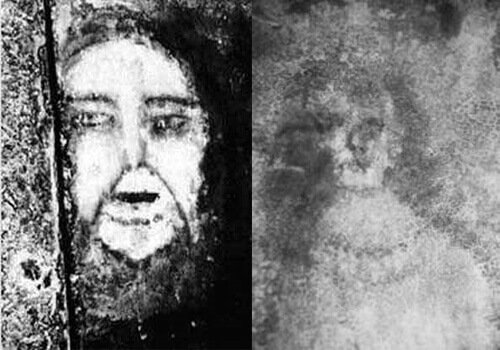
Have you ever seen the shape of a face in a lock? Have you seen a face in a cloud? These experiences are not abnormal. They are rather common and could be examples of pareidolia. Pareidolia is defined as a psychological phenomenon where a vague and random stimulus (usually an image) is mistakenly perceived as a recognizable form. The individual provides an organization and meaning to an ambiguous or unstructured stimulus.
Examples of pareidolia are the faces we see drawn in the profile of a mountain or in the flames that emerge from a chimney. Paediatrics are not pathological at all. Perhaps what would be pathological was the inability to form them. Thus, they constitute a magnificent example of what constitutes an anomalous mental experience. The term anomaly, in this case, does not imply pathology, disease or morbidity.

Pareidolia is a perceptive distortion
Disorders of perception and imagination are usually classified into two groups: perceptual distortions and deceptions. Perceptual distortions are only possible through the performance of the sense organs.
These perceptual distortions occur when a stimulus that exists outside of us (and that is accessible to the sensory organs) is perceived in a different way from what might be expected. The anomaly is that the physical characteristics of the stimulating world are perceived in a distorted way.
By distortion we understand any of these two possibilities:
* Different perception than usual and more likely taking into account previous experiences or the way other people perceive that stimulus.
* Perception different from that which would result in the case of considering only the physical configuration of the stimulus. This happens in the illusions. This is the case of pareidolia.
In the case of perceptual deception, a new perception occurs. This new perception usually coexists with the rest of the "normal" perceptions. Perceptual deceptions are not based on stimuli existing outside the individual (as happens in hallucinations).

How many types of perceptual distortions are there?
Within the perceptual distortions we find the following classification:
* Hyperesthesias and hypesthesia. They are abnormalities in the perception of intensity (eg, hyperalgesia and hypoalgesia, that is, feeling more or less pain).
* Abnormalities in the perception of quality. They make reference to colored visions and to changes in the perception of the color of the objects.
* Metamorphopsias. They suppose anomalies in the perception of size and / or shape.
* Abnormalities in the perceptual integration. They are rare anomalies that Sometimes they appear in organic states and in schizophrenia.
* Delusions. Here we find two types: the sensation of presence and the pareidolias (subject of this article).
As we can see, there are several perceptual distortions that we can experience, some more surprising than others. In the subject that concerns us, we see how pareidolia is a type of illusion.
The illusions: anomalies in the structuring of ambiguous stimuli
An illusion can be conceptualized as a distortion of perception insofar as it is defined as a "mistaken perception of a concrete object". Thus, illusions are percepts that do not correspond to the objective physical characteristics of a specific stimulus.
From a classical psychological perspective, illusions are the product of a disposition or tendency, which we have people to organize, in a significant whole, elements more or less isolated from each other or with respect to a background. There are many examples of illusions, such as the illusion of Müller-Lyer or the reversible figures. We can easily find them in the internet.

The pareidolias have been able to influence human culture and religiosity
There are many phenomena that, observed in a superficial way, can be curious and even be a joke. This is the case of pareidolia. If we search online we can find references to a photograph of an explosion, or the surface of another planet, a cloud or just a spot on the wall, where people claim to see religious images, extraterrestrials, faces of people, animals or texts of the Koran.
The phenomenon of pareidolia can also be expressed in auditory images, for example, in the song of the quetzal or in the echo of the Kukulkan pyramid at Chichen Itza. We also find them in the supposed voices from beyond the grave, in the white noise of a television or in the discs reproduced in reverse, in which supposed satanic messages are heard.

Aniconic religions (which reject icons) such as the Muslim and the Jewish, have their own manifestations associated with pareidolia. Thanks to it, the Muslims see the name of Allah in clouds, snow spots in the mountains or northern lights among other manifestations that have been denominated "Muslim pareidolias", "Quran miracles" or Islam Miracles.
Among the faithful of the Jewish religion, the so-called secret codes of the Torah are known. In them, mathematical experts in statistics believe they find prophetic texts of present or future events. Well, it is thought that they are probably influenced by the same pareidolia phenomena.
A known case of pareidolia: the faces of Bélmez
The faces of Bélmez are a phenomenon considered by the adepts to parapsychology as paranormal. This phenomenon consisted of the appearance of pigmentations, identified as faces, on the floor of a house located in Bélmez de la Moraleda. Bélmez is a small town in the province of Jaén, in Spain.
This phenomenon began to occur in 1971. Adepts to parapsychology considered this event as "without doubt, the most important paranormal phenomenon of the twentieth century." However, several scholars of the subject classified it as a fraud.

This could be due to the phenomenon of pareidolia, since the faces that appeared in said house, in the form of humidity, could be due to a perceptive distortion. Even so, the faces that appeared in Bélmez seemed so real that it was also thought that they were made in secret by the owner of the house.
In any case, pareidolia is a phenomenon that never ceases to amaze us. It has its explanation in the way we organize the stimuli in our mind and it is simply an illusion or perceptual distortion.
